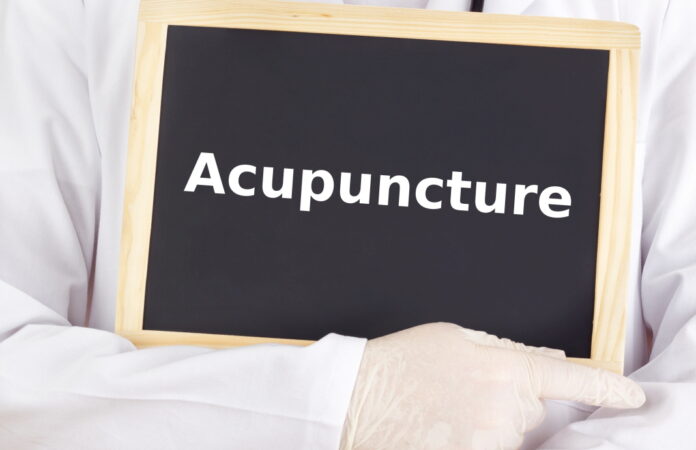- By ChangShik Yin*§, Hi-Joon Park+, Younbyoung Chae+, Eunyoung Hat+, Hun-Kuk Park+, Hyang-Sook Lee++, HyeongCyun Koh§, SungKeel Kang§; SunMi Choi=, YeonHee Ryu= and Hyejung Lee+.
- *Department of Acupuncture, CHA Biomedical Center, College of Medicine, Pochon CHA University, Seoul 135-081, Korea
- +TKM Research Group, Kyung Hee University, Seoul 130-701, Korea
- ++College of Oriental Medicine, Sangji University, Wonju 220-702, Korea
- §Department of Acupuncture, Kyung Hee Medical Center, Seoul 130-702, Korea
- =Department of Medical Research, Korea Institute of Oriental Medicine, Daejeon 305-811, Korea
- Neurological Research, 2007, Volume 29, Supplement 1 S11
As with Taegeuk acupuncture based on Sasang constitutional medicine, the theory behind the eight constitution acupuncture method is that each person has a specific constitution, which determines the body’s inherent strengths and weaknesses. Physiologic or pathologic characteristics of the patient assume a discernible pattern according to the constitution to which that person belongs. Influenced by Dr Jae Ma Lee’s work, Dr Do Won Kwon developed eight constitution acupuncture through clinical experience. His theory was presented for the first time at the International Congress of Acupuncture in Tokyo5·6,7.
In eight constitution acupuncture theory, each of the four constitutions described in Sasang constitutional medicine is further subdivided into another two constitutions. This occurs because the morbidity of a given constitution by Sasang constitutional medicine may be caused either by the excessively strong functioning of the strongest organ or by excessively weak functioning of the weakest organ. Eight constitution acupuncture theory has the followollowing i constitutions: Metal Yang (Pulmotonia), Metal Yin (Colonotonia), Earth Yang (Pancreotonia), Earth Yin (Gastrotonia), Wood Yang (Hepatotonia), Wood Yin (Cholecystotonia), Water Yang (Renotonia) and Water Yin (Vesicotonia). Essentially, each of the constitutions has its own pattern of discrepancies of the organ energy. An excessively strong energy in the large intestine, for example, is the major cause of diseases in the constitution of Metal Yin. Similarly, excessively weak energy in the liver is the major cause of diseases in the constitution of Metal Yang.
Appearance, characteristics, body composition and disease types provide key information for discriminating the constitutions. The most definite and popular method is the pulse diagnosis, also developed by Dr Kwon, which differs in both position and method from traditional pulse diagnosis. The contact points on the radial artery are more proximal than those identified conventionally, and a pulse pattern is observed. Each constitution shows a unique pulse pattern when the pulse diagnosis is performed using this method.
The method of needle manipulation used in eight constitution acupuncture theory is basically a quick and superficial insertion of the needle, followed by an instant effortless withdrawal to achieve Deqi (or Qi arrival). The needle is inserted at a slant along or against the direction of the flow of a meridian. Insertion is repeated a designated number of times.
The morbidities of eight constitutions are managed by constitution-specific acupuncture formulae provided by the eight constitution acupuncture. Besides the fundamental formula as a basic prescription, others such as vitalization formula, bactericidal formula, paralysis formula, psycho formula and inflammation formula are used. These acupuncture formulae are selections of the five transport poi nts of relevant meridians based on the highly sophisticated and modified application of the traditional ‘Saeng’ or ‘Geuk’ cycle relationships. Treatment for Metal Yang constitution, for example, with strong lung energy and weak liver energy, should basically strengthen the liver energy by needling at acupoints LUB (―), LR4 (-), Kl10 (+) and LRB (+). Lifestyle management, including ways of thinking, stress management skill, diet, exercise and daily activities, is also tailored to the constitution to which the patient belongs.
There is still a lack of well-designed scientific research, although the theory has been proven empirically to be effective. One recent report suggested that eight constitution acupuncture produced a more effective treatment of pain symptoms for herniated intervertebral lumbar disk patients diagnosed by magnetic reasonance imaging than conventional body acupuncture16.
References
- 5. Yin CS, Park HJ, Chae Y, et al. Constitutionally individualized and practically integrated characteristics of Korean Acupuncture. Kor J Meridian Acu 2006; 23: 19-28
- 6. Lee BH. Research of the Tao of Acupuncture, Seoul: Haenglim Publishing, 1974
- 7. Kwon DW. A Study of Constitution-Acupuncture, Present at International Congress of Acupuncture, 1965, Tokyo, Japan
- 16. Chae SJ, Kim NO, Park YC, et al. Comparison of the improvement of subjective symptoms between body acupuncture group and 8 constitution acupuncture group. J Kor Acu Mox Soc 1999; 16: 25- 37



































